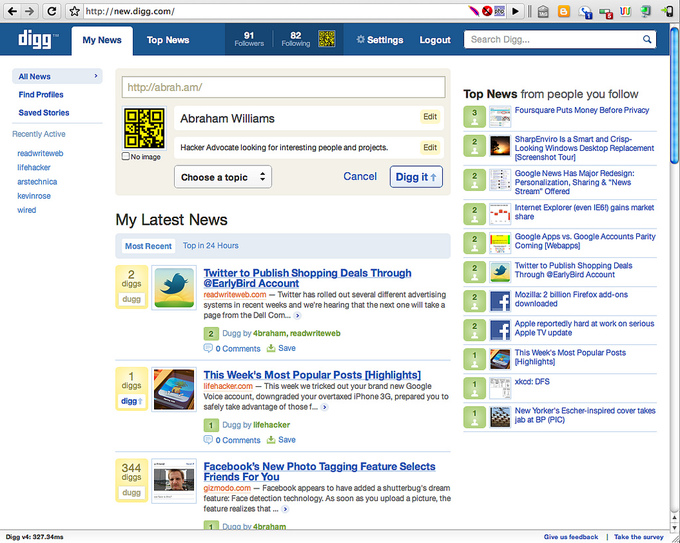11.3: Other Uses and Future Developments
Trends in Social Media
Real-time and location-based digital activities are key trends for marketers to understand as they try to develop image, create awareness, and increase sales.
As the increase in popularity of social networking is on a constant rise, new uses for the technology are constantly being devised. At the forefront of emerging trends in social networking sites is the concept of real-time web and location-based web. Real-time allows users to contribute content, which is then broadcast as it is being uploaded, a concept much akin to live radio and television broadcasts.
Twitter set the trend for real-time services, wherein users can broadcast to the world what they are doing, or what is on their minds within a 140-character limit. Facebook soon followed suit with its “Live Feed” where users’ activities are streamed as soon as it happens. While Twitter focuses on words, Instagram, another real-time service, focuses on photo sharing wherein users can update their streams with photos while at an event or after. Facebook, however, remains the largest photo sharing site, with Instagram being a close second. TicTok is catching up quickly.
Companies have begun to merge business technologies and solutions, such as cloud computing, with social networking concepts. Instead of connecting individuals based on social interest, companies are developing interactive communities that connect individuals based on shared business needs or experiences. Many provide specialized networking tools and applications that can be accessed via their websites, such as LinkedIn. Others companies, such as Monster.com, have been steadily developing a more “socialized” feel to their career center sites to harness some of the power of social networking sites.
One popular use for this new technology is social networking between businesses. Companies have found that social networking sites such as Facebook and Twitter are great ways to build their brand image. According to Jody Nimetz, author of Marketing Jive, there are five major uses for businesses and social media: create brand awareness, manage their online reputation, recruit employees, learn about new technologies and competitors, and generate leads for potential prospects. These companies are able to drive traffic to their own online sites while encouraging their consumers and clients to have discussions on how to improve or change products or services. These social networking trends create fun ways for consumers and companies to interact with mutually beneficial outcomes. Consumers get better products and companies get the information they need to attract more consumers.
Research using Digital Media
The field of Internet research is relatively new and evolving. Online research methods enable researchers to use increasingly sophisticated digital tools to collect data via the Internet. Thus, the practice is also referred to as Internet research, Internet science, or iScience. Many of these online research methods are related to existing research methodologies, but re-invent and re-think them within the scope of digital technologies, rules and media associated with the internet. The growth and rapid adoption of social media technologies has introduced a new level of complexity and opportunity for digital researchers. Inclusion of social media research can provide particularly unique insights into consumer and societal segments.
 Digg Website: Social bookmarking sites such as Digg are used to gather research on different target markets.
Digg Website: Social bookmarking sites such as Digg are used to gather research on different target markets.
Application of Digital Media in Research
Digital media including images, videos and audio can prove valuable sources for Internet researchers. Specific types of research methods that incorporate digital media include:
- Online ethnography
- Online focus groups
- Online interviews
- Online questionnaires
- Web-based experiments
- Online clinical trials
Advantages of Digital Research
Market research is increasingly making use of developments in Web 2.0 technologies and online communities. Social media analytics allow brands to efficiently collect and analyze qualitative research on user interaction with images, video, podcasts and other digital media. Although the open and collaborative nature of content communities offer opportunities for research, companies also utilize private online communities focused on individual brands or customer segments. These private communities can engage customer groups or target consumers who might be difficult to reach using traditional offline tactics. Companies are able to collect and aggregate this consumer information to define segments of homogeneous consumers. To supply targeted and relevant product offerings, the data is further segmented using in-house or third-party databases; personalization techniques; or opt-ins from consumers themselves.
Brands also benefit from online communities by having them on-hand to respond to questions, test hypotheses and observe trials in real-time. Digital technologies can quickly adapt to an organization’s research needs, while keeping pace with internal development processes. Social media and digital platforms also produce a consumer feedback loop where brands can continually check new ideas, such as product development, from inception to launch.
You Try It!

